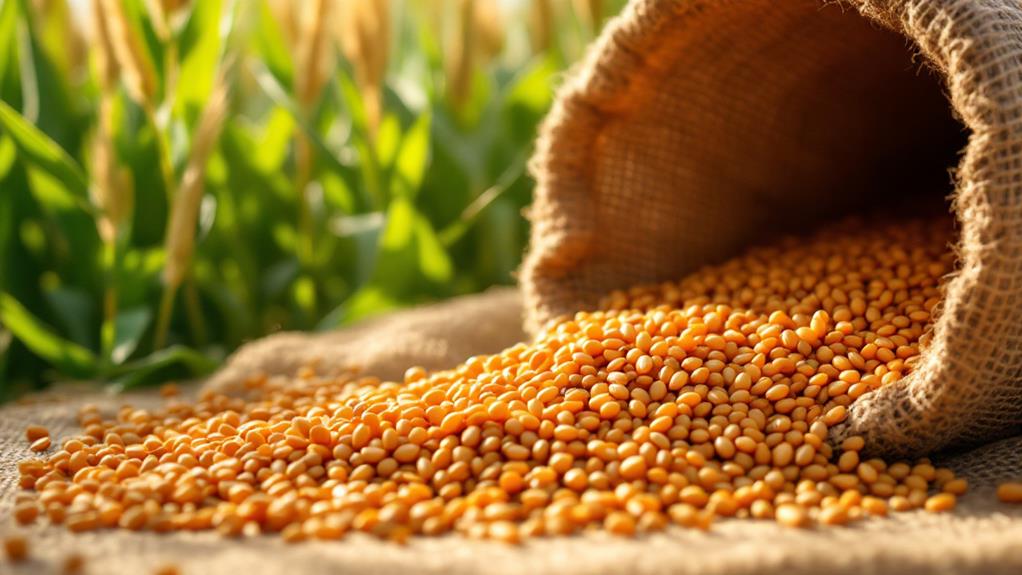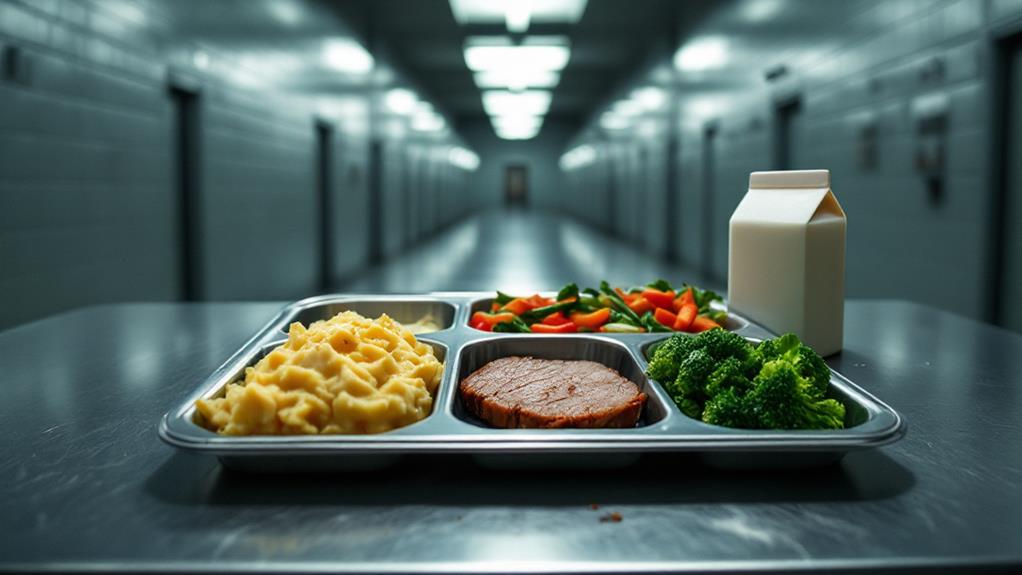What Is the CICO Equation? The Simple Formula for Weight Loss

To lose weight using the CICO equation, focus on balancing "Calories In" and "Calories Out." This means consuming fewer calories than you expend. You'll use your Total Daily Energy Expenditure (TDEE) to set your calorie intake, ensuring it's lower for a deficit. Track what you eat and drink, and engage in physical activities like exercise and increasing daily movements to burn more calories. Be mindful of nutrient quality to maintain satiety and metabolism. While CICO offers flexibility in choosing foods, it's crucial to bear in mind that other factors also contribute to successful weight management. Uncover how CICO can fit into your lifestyle and goals.
Understanding the CICO Equation
Regarding weight loss, understanding the CICO equation is fundamental to achieving your goals. The CICO equation, which stands for "Calories In, Calories Out," revolves around the energy balance equation. Essentially, it's about managing the relationship between the calories you consume and the calories you burn. To achieve weight loss, you need to create a calorie deficit where your calorie intake is less than your calorie expenditure. This deficit forces your body to use stored energy, leading to weight loss over time.
A crucial component in this process is understanding your Total Daily Energy Expenditure (TDEE). TDEE represents the total number of calories you burn in a day through basic bodily functions and physical activities. Knowing your TDEE helps you set a target for your daily calorie intake tailored to your weight management goals. It's vital to track your calorie intake accurately to guarantee you maintain the necessary deficit.
How Calories In Works
Understanding the "Calories In" part of the CICO equation is just as fundamental as knowing your total energy expenditure. It involves the total calories consumed through food and drinks, encompassing macronutrients like carbohydrates, fats, and proteins. Monitoring your energy intake is critical for weight loss. By accurately tracking calorie intake using apps or food diaries, you can guarantee that your intake aligns with your goals.
Your food choices considerably impact your weight loss process. Opt for nutrient-dense foods, as they not only support better health but also influence satiety and metabolic responses more positively than low-nutrient options. Remember, not all calories are equal. How your body processes different foods can affect hunger levels and influence your energy expenditure. This means that while the calorie count is significant, the quality of those calories shouldn't be overlooked.
To maintain a calorie deficit, which is fundamental for weight loss, you need to keep your calories in consistently below your total energy expenditure. Careful monitoring of calories consumed guarantees you achieve this balance, helping you reach your weight loss goals effectively and sustainably.
Exploring Calories Out

Delving into the "Calories Out" aspect of the CICO equation reveals the components of your total energy expenditure. To begin with, resting metabolism plays a major role, accounting for 60-75% of the calories burned daily. This reflects the energy required for vital functions like breathing and circulation when you're at rest. To manage your weight effectively, understanding this baseline energy expenditure is paramount.
Next, consider the thermal effect of food, which makes up about 10% of your daily energy expenditure. This varies by the type of macronutrient consumed, with proteins generally requiring more energy to digest compared to carbohydrates and fats. Knowing this can help you tailor your caloric intake for better results.
Physical activity includes all movements that contribute to calories burned, encompassing both structured exercise and non-exercise activity thermogenesis (NEAT). NEAT refers to the calories you burn through daily activities like walking or even fidgeting, which can greatly differ between individuals.
Accurate tracking of your "calories out" is vital for weight management. People often underestimate their energy expenditure from both exercise and daily activities. By closely monitoring this, you can adjust your caloric intake accordingly, ensuring a balanced energy expenditure.
Role of Energy Balance
In the context of achieving weight loss, the role of energy balance is essential. It's all about the relationship between the calories you consume and the calories you burn. To effectively lose weight, you need to create a calorie deficit. This means your caloric intake should be less than your total energy expenditure, leading your body to use stored fat for energy.
Here's how energy balance contributes to weight loss:
- Resting Metabolic Rate (RMR): This is the energy your body uses at rest. It forms a significant part of your total energy expenditure and varies based on factors like lifespan and muscle mass.
- Non-Exercise Activity Thermogenesis (NEAT): These are the calories burned through daily activities like walking or fidgeting. Increasing NEAT can enhance your calorie burn without structured exercise.
- Caloric Intake: Reducing the number of calories you consume helps create a calorie deficit. Make sure your food choices are nutritious to support comprehensive health.
- Sustainable Weight Loss: By maintaining a consistent calorie deficit of 250 to 1000 calories daily, you can achieve a weight loss of about 0.5 to 2 pounds per week, which is sustainable and healthy.
Benefits of CICO

Having investigated the role of energy balance in weight loss, let's examine the benefits of the CICO (Calories In, Calories Out) approach. Initially, CICO offers flexibility in your food choices. You can still enjoy your favorite foods while maintaining a calorie deficit, which is essential for weight loss. Studies back this up, showing individuals can achieve about an 8% reduction in body weight over 3-12 months by following the CICO method.
By focusing on calorie intake and expenditure, CICO encourages you to become more aware of calorie content, leading to healthier habits and better nutritional choices. This increased awareness can help you develop a balanced relationship with food, understanding how your choices impact your energy balance.
Moreover, CICO promotes a realistic and sustainable approach to weight loss. Unlike extreme diets, it encourages gradual changes, which are more likely to lead to long-term success. By tracking both calorie intake and expenditure, you can make informed decisions that align with your lifestyle and health goals. This method not only helps you lose weight but also fosters a comprehensive understanding of how to maintain a healthy weight through better food choices and consistent energy balance.
Limitations of CICO
Understanding the limitations of the CICO approach is crucial for a well-rounded perspective on weight loss. Although it simplifies weight management to a matter of calories consumed versus calories burned, it doesn't capture the full picture. Here's why:
- Metabolism and Individual Factors: The CICO model overlooks how individual factors like genetics, activity levels, and lifestyle choices can affect your metabolism. This means that even with a calorie deficit, weight loss results can vary greatly from person to person.
- Macronutrients and Satiety: Not all calories are created equal. Different macronutrients (proteins, fats, carbohydrates) impact satiety and metabolism differently. Ignoring this can lead to nutrient deficiencies if you solely focus on calorie counting.
- Psychological Impact: Relying heavily on calorie counting can lead to disordered eating behaviors. The fixation on numbers may overshadow the importance of comprehensive health and well-being.
- Adaptive Thermogenesis: Prolonged calorie restriction can slow down your metabolism, a process known as adaptive thermogenesis. This makes it increasingly difficult to maintain weight loss even when you're in a calorie deficit.
Incorporating Nutrient Quality

When you're focusing on weight loss, it's imperative to evaluate not just the quantity of calories but the quality of nutrients you consume. Nutrient-dense foods are significant because they help regulate appetite hormones like ghrelin and leptin, which can affect satiety. To support a calorie deficit, include high-fiber foods such as fruits and vegetables in your diet. These not only aid digestion but also improve feelings of fullness, making it easier to manage your caloric intake.
Protein-rich foods are another fundamental component. They have a higher Thermic Effect of Food (TEF), which means they require more energy to digest than fats and carbohydrates. This can increase your total calorie expenditure, aiding your weight loss efforts. Moreover, consuming a variety of micronutrient-rich foods is critical to prevent nutritional deficiencies and guarantee your body gets the necessary vitamins and minerals it needs.
Strategies for Effective Weight Loss
Balancing nutrient quality with effective strategies is key to successful weight loss. To shed those extra pounds, focus on creating a calorie deficit by consuming 250 to 1,000 fewer calories than your Total Daily Energy Expenditure (TDEE) each day. Here are four strategies to help you achieve this:
- Incorporate Nutrient-Dense Foods: Include lean proteins, whole grains, and a variety of fruits and vegetables in your meals. These foods not only help you feel full but also guarantee you maintain vital nutrients while reducing the calories you consume.
- Engage in Regular Physical Activity: Incorporate exercises like resistance training to build muscle mass, which increases the calories you burn. This can improve your metabolism and aid in achieving a healthy weight.
- Monitor and Track: Use apps like MyFitnessPal or LoseIt to accurately track your calorie intake and expenditure. This helps you stay on track and adjust your diet and activity levels to meet your weight loss goals.
- Boost Appetite Control: Stabilize your blood sugar by cutting down on refined carbohydrates and increasing fiber intake. This approach can enhance appetite control and support sustainable weight loss.
Long-Term Weight Management

Successfully managing weight in the long term hinges on a few key principles that go beyond calorie counting. Initially, understanding your body's equilibrium is fundamental. While a calorie deficit is necessary for weight loss, prolonged restrictions can trigger adaptive thermogenesis, slowing your metabolism. To counter this, find a balance between calories in and calories out. Once you reach your desired weight, adjust to your maintenance calories to prevent regaining weight.
Consistency in diet and exercise is imperative. Your body may hit a plateau as it adapts, reducing energy expenditure. Incorporating resistance training can improve body composition and preserve muscle mass, keeping your metabolism robust. Don't just track caloric intake; focus on nutrient quality. Whole foods increase satiety and promote long-term health, unlike processed options.
Adopt a holistic approach to weight management. Stress management and getting enough sleep are critical lifestyle changes. High stress or lack of rest can disrupt your weight loss efforts. By integrating these elements and focusing on consistent, sustainable habits, you can maintain your weight loss and comprehensive well-being over time.




